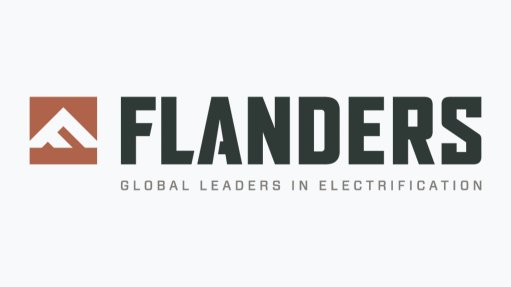South Africa shows economic resilience – Allianz report
According to a new global insolvency report published by credit insurer Allianz Trade, operating in South Africa through the Allianz Commercial licence, economic resilience has been tested and remains a feature of South Africa, evidenced by a declining trend in insolvencies from a historical perspective, even though the latest results signal a moderate resurgence.
The report, which offers updated forecasts for 2023 and 2024, says that, despite an increase in the third quarter compared with the second quarter of this year, the number of insolvencies remains quite low compared with the average of recent years and may also be connoted with a slight pickup in economic activity after the months when loadshedding was most intense.
The level for the first nine months of this year is 13% lower than the same period last year, with the year possibly ending below the 1 900-case threshold, on par with 2017 and 2018 levels. The severity of individual insolvencies and the possibility that industries serving public entities may suffer more difficult financing conditions, however, require attention, Allianz says.
The company maintains its forecast for South Africa’s gross domestic product (GDP) to grow at 0.7% this year, although output in the energy-intensive mining and manufacturing sectors is still below prepandemic levels owing to business interruptions and fiscal consolidation efforts.
Inflation is again slightly on the way up at 5.4% in September, after falling consistently since the peak of 8% a year ago. Allianz’s forecast on GDP growth is unchanged for 2024 at 1.4%, thanks to mining output, resilient private consumption and lower external vulnerabilities, with foreign debt to GDP now at less than 40%, down from 53% in 2019 and 56% in 2020, and financing conditions in line with those of Colombia and Brazil. Foreign direct investment is also moderately on the rise.
In the next 12 months, Allianz believes that social unrest and violence are likely to intensify, while the need to increase social spending before the 2024 election and idiosyncrasies among public entities and institutions pose risks to the outlook.
The next 12 months will tell if election-related expenditure by the government, enhanced electricity supply and the potential improvement of the employment rate, which remains slightly above 40% despite growing for seven consecutive months, may help unleash additional growth, Allianz says.
GLOBAL OUTLOOK
After a small rebound of 1% in 2022, Allianz says global insolvencies are set to rise by 6% this year and 10% in 2024. Waning cash buffers and worsening profitability are putting many sectors at risk, it adds.
It notes that the recession in corporate revenues is gaining traction amid lower pricing power and weaker global demand. As of the second quarter, the revenue recession has been broad-based across all regions for the first time since mid-2020, at about -1.9% year-on-year.
Allianz says this, combined with continued high costs, is squeezing profitability. As a result, liquidity positions are worsening fast and are not likely to improve before 2025.
“Companies still have a sizable amount of excess cash, €3.4-billion in the Eurozone and $2.5-billion in the US. But these cash buffers remain highly concentrated in the hands of large firms and in specific sectors such as tech and consumer discretionary.
“And in general, most companies are unable to increase their cash positions through operations in the context of lower-for-longer economic growth. All in all, we expect two accelerations in global business insolvencies, with 6% in 2023 and 10% in 2024, after 1% in 2022,” Allianz Trade CEO Aylin Somersan Coqui says.
The report shows that the most vulnerable corporates and sectors are “caught between a rock and a hard place” in 2023, with hospitality, transportation and wholesale/retail on the front line. Other sectors are catching up though, in particular construction, where backlogs of work have been almost completed – especially in the residential segment.
“At the same time, higher-for-longer interest rates are reducing demand in sectors such as real estate and durable goods and will start pressuring solvency in highly indebted sectors, such as utilities and telecom, in addition to real estate, on both sides of the Atlantic.
“Moreover, global working capital requirements (WCRs) currently stand at a record high of 86 days, more than two days above prepandemic levels. Higher interest rates also make it even more expensive for companies to finance structurally higher WCR, which poses risks for sectors such as construction and machinery and transport equipment,” explains Allianz Trade insolvency research lead analyst Maxime Lemerle.
At the end of 2023, Allianz says, the normalisation of business insolvencies will be complete in most advanced economies, and 55% of countries are likely to see large double-digit increases. This includes a 47% increase in the US, a 36% increase in France, a 59% increase in the Netherlands, a 35% increase in Japan and a 41% increase in South Korea.
Further, globally, three out of five countries are expected to reach prepandemic business insolvency levels by the end of next year, including large markets such as the US and Germany. On both sides of the Atlantic, GDP growth will need to double to stabilise insolvency figures, which will not occur before 2025.
“Moreover, in a context of slowing global economic growth, payment terms are likely to lengthen, adding to the rise in insolvencies in the coming quarters. Global days sales outstanding already stand above 60 days for 47% of firms.
“One additional day of payment delay is equivalent to a financing gap of $100-billion in the US, $90-billion in the European Union and $140-billion in China. With bank loans already drying up for small- to medium-sized enterprises, closing this financing gap could be a significant challenge,” Coqui explains.
Article Enquiry
Email Article
Save Article
Feedback
To advertise email advertising@creamermedia.co.za or click here
Comments
Announcements
What's On
Subscribe to improve your user experience...
Option 1 (equivalent of R125 a month):
Receive a weekly copy of Creamer Media's Engineering News & Mining Weekly magazine
(print copy for those in South Africa and e-magazine for those outside of South Africa)
Receive daily email newsletters
Access to full search results
Access archive of magazine back copies
Access to Projects in Progress
Access to ONE Research Report of your choice in PDF format
Option 2 (equivalent of R375 a month):
All benefits from Option 1
PLUS
Access to Creamer Media's Research Channel Africa for ALL Research Reports, in PDF format, on various industrial and mining sectors
including Electricity; Water; Energy Transition; Hydrogen; Roads, Rail and Ports; Coal; Gold; Platinum; Battery Metals; etc.
Already a subscriber?
Forgotten your password?
Receive weekly copy of Creamer Media's Engineering News & Mining Weekly magazine (print copy for those in South Africa and e-magazine for those outside of South Africa)
➕
Recieve daily email newsletters
➕
Access to full search results
➕
Access archive of magazine back copies
➕
Access to Projects in Progress
➕
Access to ONE Research Report of your choice in PDF format
RESEARCH CHANNEL AFRICA
R4500 (equivalent of R375 a month)
SUBSCRIBEAll benefits from Option 1
➕
Access to Creamer Media's Research Channel Africa for ALL Research Reports on various industrial and mining sectors, in PDF format, including on:
Electricity
➕
Water
➕
Energy Transition
➕
Hydrogen
➕
Roads, Rail and Ports
➕
Coal
➕
Gold
➕
Platinum
➕
Battery Metals
➕
etc.
Receive all benefits from Option 1 or Option 2 delivered to numerous people at your company
➕
Multiple User names and Passwords for simultaneous log-ins
➕
Intranet integration access to all in your organisation














